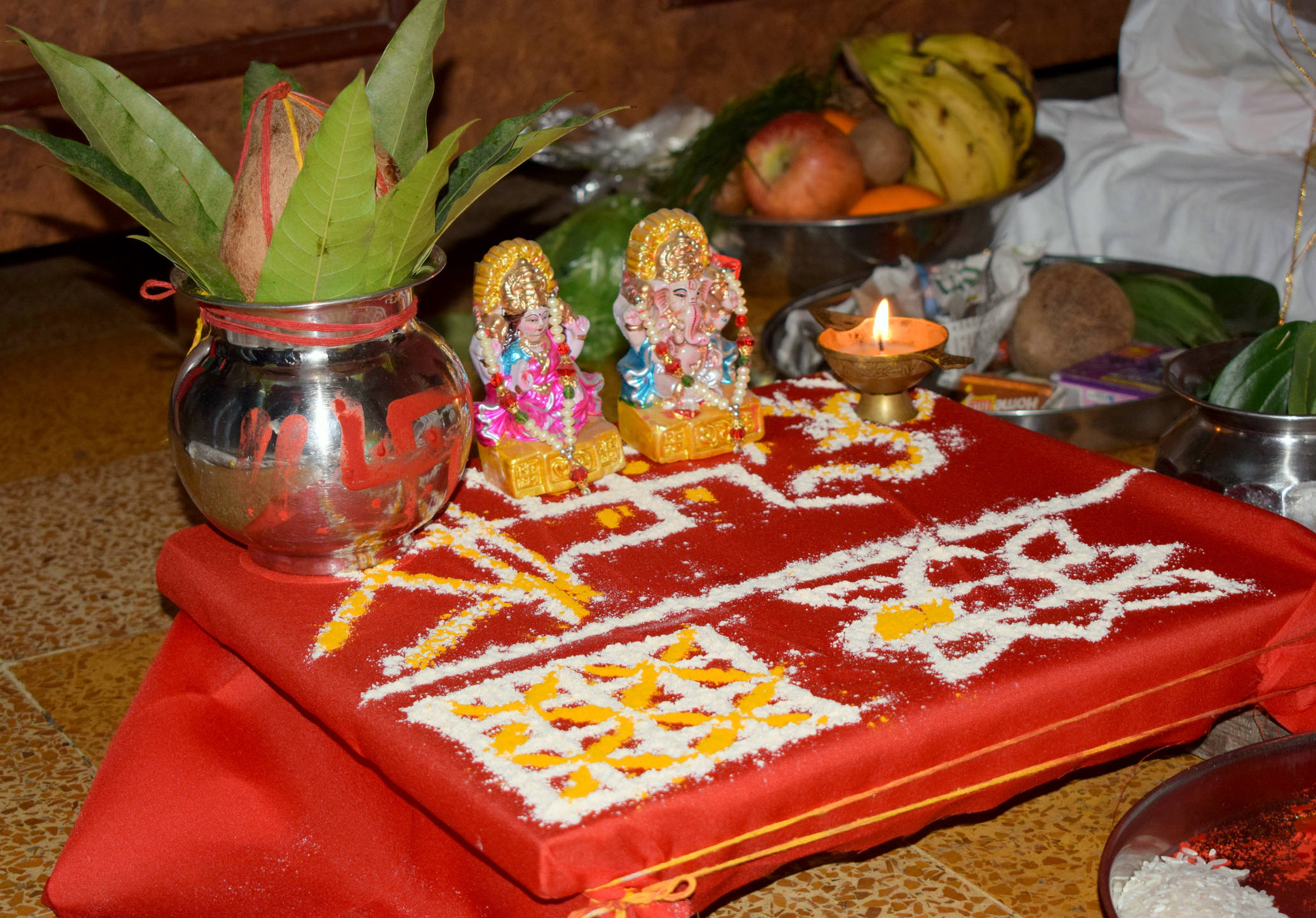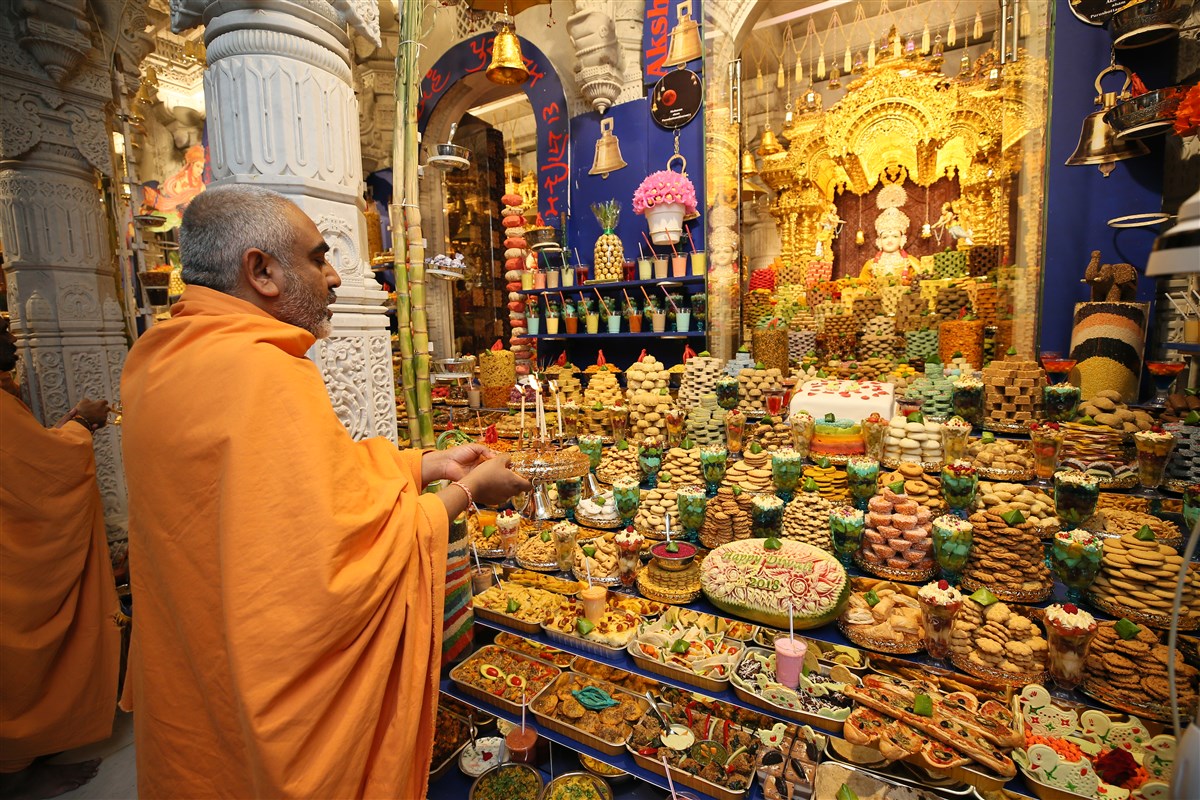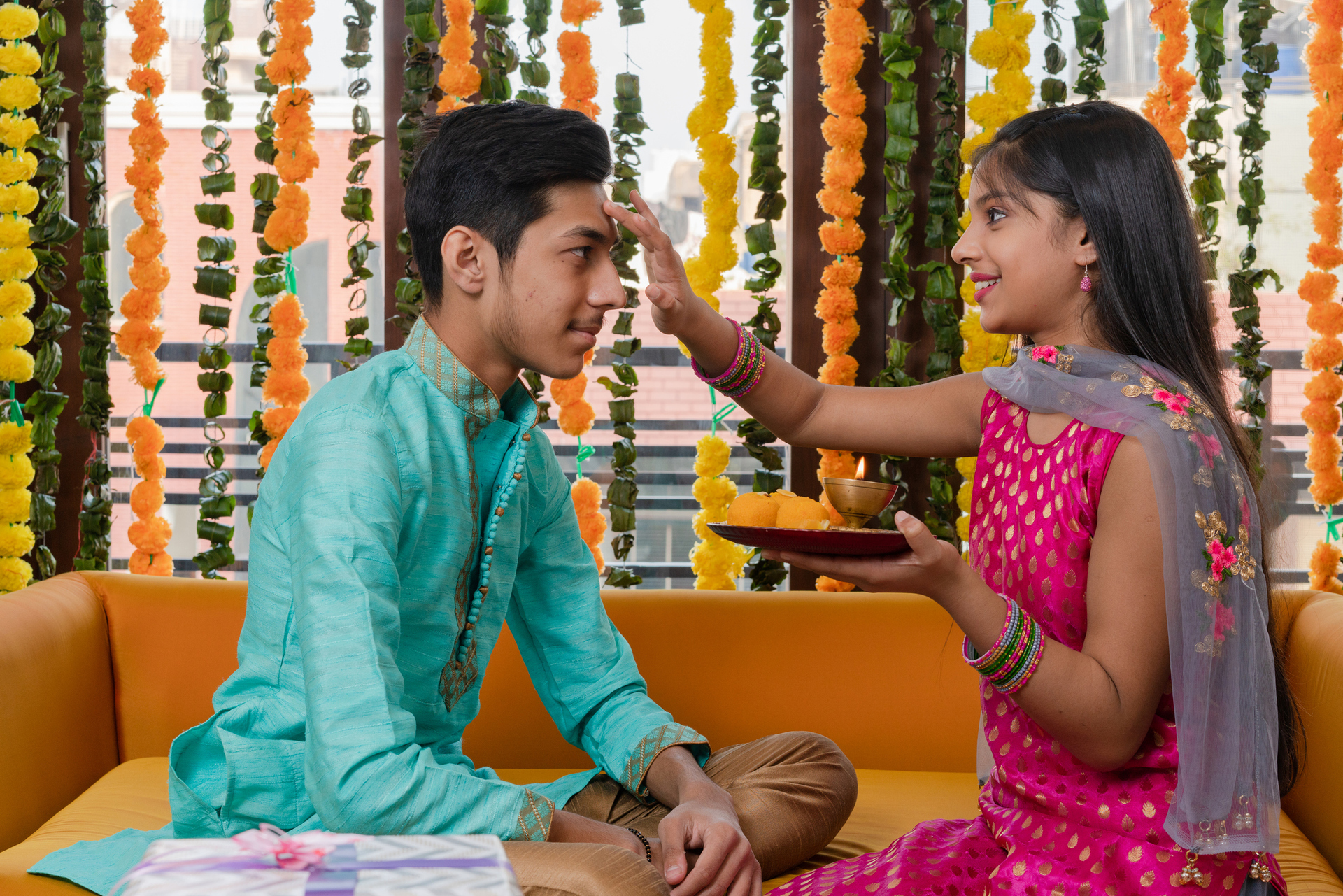Five Days of Diwali
Day 1: Dhanatrayodashi (Dhanteras)
The First day of Diwali is considered an auspicious day to start new ventures. It commemorates the ancient story of the churning of the primordial ocean by the Devtas (deities) and demons and the emergence of Dhanvantri the physician of the Deities, with a jar of Amrut – the nectar of immortality.
In parts of India, it is time to reap the fruits of the last harvest. Some communities worship wealth, while many consider this an auspicious day to buy gold and silver or other metals, while others plan new purchases for the day, thus stimulating the local economy.
Day 2 - Naraka Chaturdasi
Also known as “Choti Diwali” (small Diwali), it celebrates the day the evil king Narakasura was killed by Shree Krishna and his wife Satyabhama, thus freeing 16,000 women held in captivity. It symbolizes deliverance from everything negative.
A day for visiting family, friends or business partners and exchanging gifts, it is celebrated by different regions of India celebrate the day in different ways:
- In some communities, people have a special bath (Abhayanga Snan) and wear new clothes to commemorate Shree Krishna’s victory.
- In Goa, effigies of Narakasura are burned.
- In West Bengal, it is believed that on this day souls of the deceased visit their relatives on earth.
- Other communities honor this day by celebrating weapons (both literal and metaphoric)
Day 3 - Lakshmi Puja
The main day of Diwali festival is the Lakshmi Puja – offering devotional services to the Goddess of wealth and prosperity. This is also the night that falls on Amavasya – the new moon night of darkness. It is believed that Devi Lakshmi visits her devotees and blesses them with wealth.
Hindus clean and decorate their homes in anticipation of the day. Many create “rangolis” outside their homes to welcome the Devi. Many devotees observe the Lakshmi Vrat (a vow or fast) and wear new clothes. In business communities, this day marks the end of the year, and old accounts are balanced and closed.
The evening brings the community together in lavish displays of diyas, firecrackers and festive foods.


Day 3 - Lakshmi Puja
The main day of Diwali festival is the Lakshmi Puja – offering devotional services to the Goddess of wealth and prosperity. This is also the night that falls on Amavasya – the new moon night of darkness. It is believed that Devi Lakshmi visits her devotees and blesses them with wealth.
Hindus clean and decorate their homes in anticipation of the day. Many create “rangolis” outside their homes to welcome the Devi. Many devotees observe the Lakshmi Vrat (a vow or fast) and wear new clothes. In business communities, this day marks the end of the year, and old accounts are balanced and closed.
The evening brings the community together in lavish displays of diyas, firecrackers and festive foods.

Day 4 - Govardhan Puja/Annakut/Vishwakarma Puja/Nav Varsh
The fourth day is celebrated in a number of different ways depending on the region and community. A popular belief commemorates Sri Krishna’s feat of lifting the Govardhan Mountain to protect his people from the terrible rains sent by Indra Dev, thus marking a victory of benevolence over jealousy. For some devotees it’s a day of charity, where they donate a ‘mountain” of food-Annakut. It is a reminder to every human to respect forces of nature, and be grateful for blessings. An ecologically focussed celebration, where some Hindus plant trees and tend to animals-particularly cows.
Nutan Varsha (New Year) – In Indian states of Gujarat and Rajasthan, this is the start of the Vikram Samvat (Hindu calendar) and is also a regional public holiday usually observed on the day after the festival of Diwali.
Vishwakarma Puja – Artists, mechanics, craftsmen, factory workers, shopkeepers and others worship Vishwakarma, the divine architect. He is said to have designed both the cities of Dwarka and Indraprastha in the Hindu epic The Mahabharata, and is associated with . engineering and architecture. Some communities use the day to honor their working implements and tools.
Bali Pratipada – This is the day the King Mahabali returns to earth to meet his subjects. According to the Puranas, in His Vamana Avatar, Vishnu pushes Bali to the netherworld to punish him for his pride. This festival is ancient with written records dating back to the 2nd century BCE.
Day 5 - Bhai Dooj
The fifth and last day of Diwali celebrates the bond between siblings.
Yama the deity of death and righteousness saw his sister, Yamuna after many years. She greeted him with joy, put a Tilak on his forehead, and prepared a great feast for him. Marking that tradition, sisters invite their brothers for a lavish meal and perform a Tilak ceremony, where they pray for their brother’s long and happy life while brothers give gifts.


Day 5 - Bhai Dooj
The fifth and last day of Diwali celebrates the bond between siblings.
Yama the deity of death and righteousness saw his sister, Yamuna after many years. She greeted him with joy, put a Tilak on his forehead, and prepared a great feast for him. Marking that tradition, sisters invite their brothers for a lavish meal and perform a Tilak ceremony, where they pray for their brother’s long and happy life while brothers give gifts.
